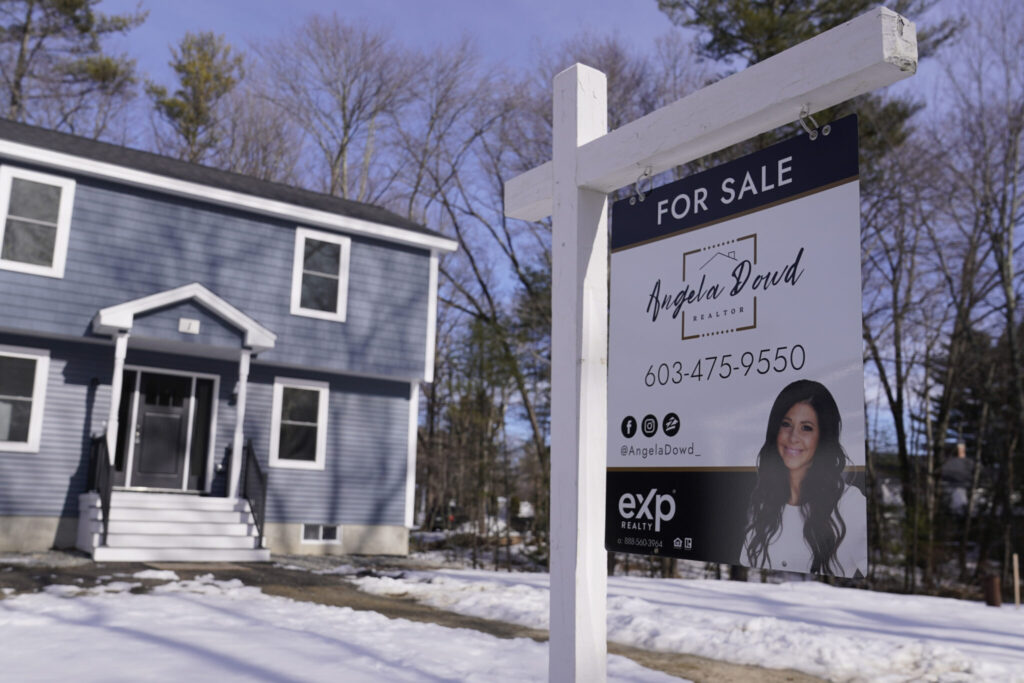Sales of previously owned homes fell in June as higher mortgage rates and a shortage of available properties frustrated buyers. Elevated mortgage rates are making home purchases less affordable, keeping many buyers out of the market and reducing demand. At the same time, the higher rates are discouraging homeowners from selling, limiting the supply of homes for sale. The drop in both demand and supply means that the number of home sales has declined, but prices haven’t fallen much. In many parts of the country, buyers who can afford to stay in the market are still facing bidding wars. The Associated Press has the story:
Home sales drop amid high rates, low supply
Newslooks- LOS ANGELES (AP)
Sales of previously occupied U.S. homes fell in June to the slowest pace since January, as a near-historic low number of homes for sale and rising mortgage rates kept many would-be homebuyers on the sidelines. The national median sales price fell on an annual basis for the fifth month in a row, though fierce competition led to a third of homes selling for more than their list price.
Existing home sales fell 3.3% last month from May to a seasonally adjusted annual rate of 4.16 million, the National Association of Realtors said Thursday. That’s slightly below what economists were expecting, according to FactSet, and marks the slowest sales pace since January.
Sales sank 18.9% compared with June last year. That marks 11 consecutive months of annual sales declines of 20% or more.
“The first half of the year was a downer for sure with sales lower by 23%,” said Lawrence Yun, the NAR’s chief economist.
The national median sales price fell 0.9% from June last year to $410,200. While down from a year earlier, the median sales price rose from the previous month, reaching the second-highest level on records going back to January 1999.
The latest housing market figures are more evidence that even with prices easing back on an annual basis after rising for more than a decade many house hunters are being held back by a persistently low inventory of homes for sale.
“This is a tough market to be a buyer,” Yun said.
All told, there were 1.08 million homes on the market by the end of June, down 13.6% from a year earlier, the NAR said.
The shortage of homes for sale has kept the market competitive, driving bidding wars in many places, especially for the most affordable homes. One-third of homes purchased last month sold for above their list price, Yun noted.
The U.S. housing market has yet to emerge from a slump that started a little more than a year ago, when the average rate on a 30-year mortgage began to climb from ultra-low levels as the Federal Reserve began raising its short-term rate in its fight against inflation.
Global demand for U.S. Treasurys, which lenders use as a guide to pricing loans, investors’ expectations for future inflation and what the Fed does with interest rates influence rates on home loans.
The average rate on a 30-year home loan is still more than double what it was two years ago, when the ultra-low rates spurred a wave of home sales and refinancing. Weekly average rates on a 30-year mortgage ranged between 6.67% and 6.79% in June, according to mortgage buyer Freddie Mac.
Higher mortgage rates can add hundreds of dollars a month in costs for homebuyers on top of already high home prices. They also discourage homeowners who locked in those low rates two years ago from selling — one reason the supply of homes for sale has been low even during the traditionally busy spring homebuying season.







